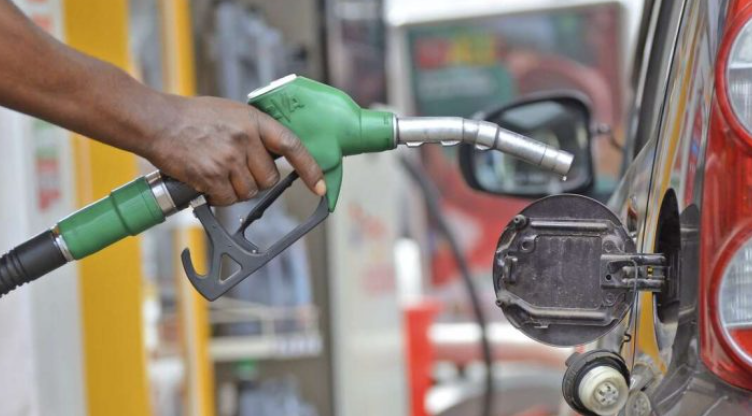

The government has defended the sharp rise in fuel pump prices even as it avoided using the Petroleum Development Levy to cushion consumers in the wake of an increase in taxes, dealers’ margins and landed cost.
On Monday, the Energy and Petroleum Regulatory Authority (EPRA) announced the July-August cycle, which saw pump prices for Super Petrol, Diesel and Kerosene increase by Sh8.99 per litre, Sh8.67 per litre and Sh9.65 per litre, respectively.
A litre of petrol is now retailing at Sh186.31 in Nairobi, diesel (Sh171.58,) while kerosene is going for Sh156.14, up from Sh177.32, Sh162.91 and Sh146.93, respectively.
EPRA has pegged the increase on the landed cost, which went up in June (whose current pump prices are based on), even as crude prices dropped to $67.73 per barrel, from an average $72.63 in May, and the recent Israel-Iran attacks that affected the global oil market.
In the latest released prices for July 15- August 24, EPRA considered two cargoes of super petrol, two cargoes of diesel and one cargo of JetA1 fuel.
All these cargoes were delivered into the country between June 10 and July 9, meaning some cargoes arrived in the country before June 13 when the “Twelve-Day War” started, with minimal impact of crude prices.
According to EPRA, the average landed cost of imported super petrol increased by 6.45 per cent from $590.24 to $628.30 per cubic metre between May and June 2025.
That of diesel went up by 6.27 per cent from $580.23 to $616.59 while Kerosene had the highest percentage increase at 6.95 per cent, with its average landed cost going $569 to $608.54 per cubic metre.
“This really is the reason why we have seen an increase in the pump price on Monday,” EPRA director general Daniel Kiptoo said during the release of the state of the oil industry briefing (Q2 2025) by the Petroleum Institute of East Africa.
However, a major adjustment in Oil Marketing Companies’ margins and distribution in addition to tax adjustments, have contributed to the jump in pump prices, EPRA’s latest pricing shows.
OMCs have been awarded a Sh2.15 per litre across the three products, while storage and distribution costs have gone up by Sh0.33 per litre to an average of Sh4.70 per litre.
This means OMCs are now getting Sh15.24 on a litre of petrol, Sh15.16 on diesel and Sh15.09 on every litre of kerosene sold at the pump.
There has also been an upward adjustment on Railway Development Levy which has gone up to Sh1.56 per litre on petrol from Sh1.46, that on diesel has increased to Sh1.53 per litre from Sh1.44 while kerose is being charged Sh1.52 up from Sh1.42.
The Finance Act 2025 has also seen Import Declaration Fee increased to Sh1.94 on a litre of petrol and Sh1.91 on diesel and kerosene from Sh1.80 and Sh1.78, respectively, with taxes and levies forming the bigger component of pump prices of up to Sh82.74 per litre.
This, as the government continues to squeeze taxpayers to meet its budgetary obligations with nine different taxes being levied on fuel, the highest being the Road Maintenance Levy, which was increased to Sh25 per litre from Sh18.
Consumers also pay excise duty, VAT, Petroleum Development Levy, Petroleum Regulatory Levy, anti-adulteration levy and merchant shipping levy.
While there has been concerns that securitisation of the road levy has affected fuel prices, Energy and Petroleum CS Opiyo Wandayi yesterday said otherwise.
“The only changes as seen in the tables is due to the changes in ad valorem taxes Railway Development Levy and Import Declaration Fee which depend on the Cost Insurance Freight (CIF) of the products,” he said in a statement.
Treasury CS John Mbadi said there was no urgency in utilising the Petroleum Development Levy, projected to be Sh110 billion in the 2024-25 financial year, to cushion consumers as prices remain relatively fair compared to last two years when they went above the Sh200 mark.
“PDL is not just about price stabilisation. It is for price stabilisation and in developing the petroleum industry. The government chooses when to intervene and EPRA, my understanding, felt that for now, we don't have to intervene. Because if you intervene too early, you can deplete that fund,” Mbadi said.
Meanwhile, EPRA has defended the move to increase OMCs and sector investors’ margins which is part of a five-year cycle to ensure they get returns.
“For us as a regulator, our mandate is to balance the interests, ensure that consumers are not being exploited and industry obtains a reasonable return on the investments that they do make,” Kiptoo said.
The Institute of Economic Affairs has since has poked holes on the EPRA formular saying it is getting more expensive.
"Over the past two years, Kenya’s fuel pricing structure has undergone a series of notable shifts, with each one quietly adding weight to the final pump price," IEA's Fiona Okadia says.












